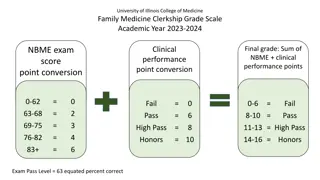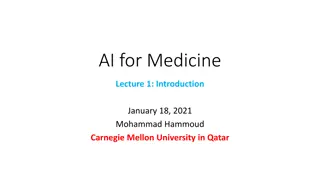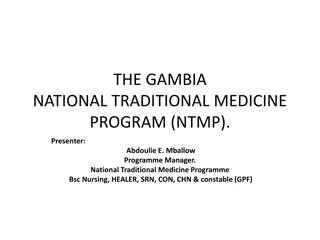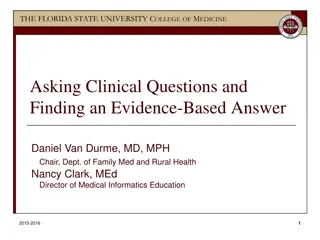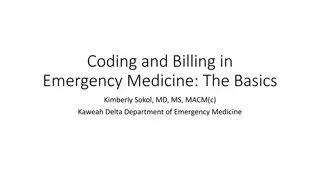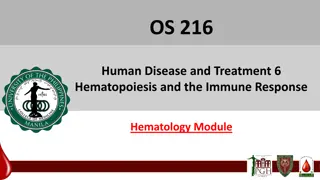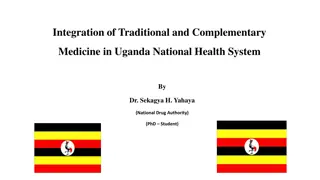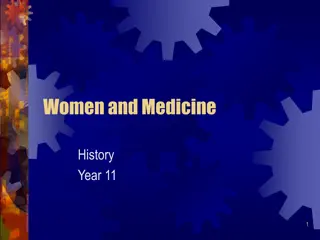Understanding Biostatistics in Medicine
Biostatistics is essential in analyzing medical and biological data to provide evidence for clinical decisions. It plays a crucial role in describing patients, evaluating treatment outcomes, and forming the foundation of Evidence-Based Medicine. By applying statistical methods, biostatistics helps in interpreting epidemiological data, enabling better understanding of disease patterns and health outcomes.
Download Presentation

Please find below an Image/Link to download the presentation.
The content on the website is provided AS IS for your information and personal use only. It may not be sold, licensed, or shared on other websites without obtaining consent from the author. Download presentation by click this link. If you encounter any issues during the download, it is possible that the publisher has removed the file from their server.
E N D
Presentation Transcript
Principles of Biostatistics for Medicine
Educational Objective Students should be able to explain what biostatistics is, and the role it plays in medicine. Students should be able to explain the relationships between biostatistics, epidemiology, and evidence-based medicine. Students should be able to explain how statistical tools are used to describe patients, or to provide credible evidence for the physician s use when making Diagnosis (Dx), Therapy (Tx), or Prognosis (Px) decisions and recommendations to patients.
What is Biostatistics? Biostatistics is the application of statistical methods to medical and biological phenomenon (Murad & Shi, 2010, p 3) Biostatistics is a tool that is used to analyze, understand, and explain the variance in medical and epidemiological data (Jekel et al., 2007). Descriptive statistics are tools which provide information that describes the patient, often in terms of demographic characteristics or disease status. Inferential statistics are tools which allow the analysis and interpretation of a sample of data that represents a given population.
Biostatistics is a Foundational Tool Epidemiology (the study of disease) is the foundation of evidence for Evidence-Based Medicine (EBM). Biostatistics is the tool that is used to analyze and understand epidemiological data. Epidemiology (POD) Evidence-Based Medicine (CDM) Biostatistics
Common Epidemiological Data A proportion is a type of fraction in which the numerator is a subset of the denominator. A rate is a fraction that also contains a time component. A ratio expresses the relationship between two numeric quantities.










